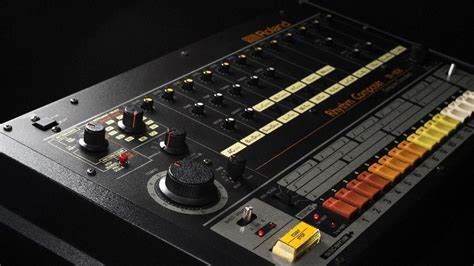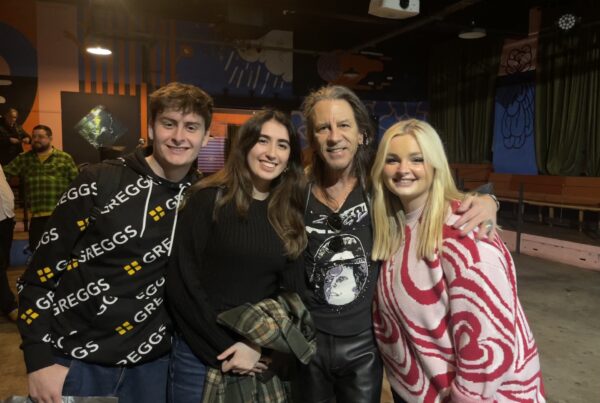If you were a music fan in the early/mid-2000s, you might remember a revival of The Concept Album, and you might not have even noticed it. One that seems to have passed many people by despite it’s popularity and legendary status is The Black Parade, by My Chemical Romance. Other bands like Coheed and Cambria, The Dear Hunter, and Protest The Hero released entire series of concept albums that told elaborate stories through their music, spanning their entire careers. But where does this idea come from, and how, if it even has, has it evolved along with the music industry’s constant state of flux?
Possibly the most well-known example, Pink Floyd’s The Wall is a concept album released in 1979 that tells the story of a rock star named Pink, who builds a metaphorical wall around himself as a defence mechanism against the world. The wall represents the emotional barriers that Pink puts up to protect himself from the trauma and pain he has experienced throughout his life.
The album is divided into two parts, with the first half exploring Pink’s childhood and the events that led to the construction of the wall. The second half delves into the consequences of the wall’s creation and its eventual destruction, as Pink comes to realize that he has become isolated and alone.

The Wall was written by Pink Floyd’s bassist and lyricist, Roger Waters, and was partly inspired by his own experiences in Pink Floyd’s rise to stardom. The band recorded the album between 1978 and 1979 in various studios, including Super Bear Studios in France, and CBS Studios in New York City. The album was produced by Bob Ezrin, who’s previous work includes production credits with Alice Cooper and Lou Reed.
Upon its release, The Wall was a commercial and critical success, quickly becoming one of Pink Floyd’s most popular and well-known albums. It spawned hit singles such as Another Brick in the Wall, Part II and Comfortably Numb, and was even adapted into a feature film in 1982, directed by Alan Parker and starring Bob Geldof as Pink.

Overall, The Wall is a powerful and thought-provoking album that explores themes of isolation, trauma, and the human condition. It remains a timeless classic of rock music and a testament to the creative vision of Pink Floyd and Roger Waters.
Coheed and Cambria’s “The Amory Wars” saga spans multiple albums and comic books, weaving a complex narrative that blended science fiction and fantasy. Meanwhile, The Dear Hunter’s The Acts series followed the story of a nameless character he navigated a world of greed, betrayal, and redemption.
But perhaps the most well-known concept album of this era was My Chemical Romance’s The Black Parade, even if you didn’t know it was one! The album follows the story of The Patient, a character facing death and reflecting on his life. The band’s theatrical live shows and striking visual style, including uniforms, pyrotechnics and inflatable stage dressings (à la Pink Floyd!) only added to the album’s impact.
These bands and their peers were not afraid to experiment with complex song structures, unconventional time signatures, and a range of instrumentation beyond the typical guitar-bassdrums setup. This approach to music production allowed them to create truly unique sonic landscapes that drew listeners into their stories, and kept them interested by not only going against the status quo, but leaving it tattered and frayed in the process.

But what made these concept albums truly special was their ability to connect with listeners on an emotional level. Whether it was the sweeping anthemic arrangements of Coheed and Cambria’s In Keeping Secrets of Silent Earth: 3, the poignant, bitter, jaded piano balladry of The Dear Hunter’s Red Hands, or the explosive, how-can-you-possibly-not-know-the-words juggernaut of My Chemical Romance’s Teenagers and Famous Last Words, these songs resonated with fans and became anthems for a generation.
Looking back on this era of progressive rock, it’s clear that these bands were, at the very least, having a crack at pushing the boundaries of what was possible in music production as an art form. By embracing complexity and acknowledging the storytelling elements right out of the gate, they created not only music, but an experience that was both intellectually stimulating and emotionally powerful.
But why is this important to us now? The revival has faded somewhat, and the trends have shifted. Well, as the music industry continues to evolve, many artists are looking for new ways to monetize their work beyond traditional album sales and touring. The concept albums of the early/mid-2000s progressive rock revival offer somewhat of a blueprint for how artists can use their music as a springboard to other creative ventures.
For example, Coheed and Cambria’s “The Amory Wars” has been adapted into comic books, graphic novels, and, if the rumour mill is to be believed, a forthcoming TV series. Fans of the band can immerse themselves in the story beyond the music, and the band has been able to expand their fanbase by reaching readers and viewers who may not have discovered their music otherwise. Similarly, The Dear Hunter has released a companion book to their “Acts” series, providing deeper insight into the characters and themes explored in their music.

My Chemical Romance has also used their music as a launching pad for other creative ventures, including a line of action figures based on the characters from “The Black Parade”, and a fashion line inspired by the band’s iconic visual style.
These examples demonstrate how artists can use their music as a springboard for other creative endeavours, building a more robust business around their art. By offering fans a deeper connection to their work, artists can foster a more loyal and engaged fanbase, and generate additional revenue streams beyond music sales and touring.
In the current state of the music industry, where streaming revenue is often not enough to sustain a career, artists must be creative and entrepreneurial in order to make a living from their art. By taking inspiration from the concept albums of the early/mid-2000s progressive rock revival, artists can explore new avenues for income and build a more sustainable career in the music industry.
For aspiring musicians and songwriters, using storytelling in music can be a powerful tool for creating emotional connections with audiences, and standing out from the crowd. By crafting a compelling narrative or concept, musicians can engage their listeners on a deeper level, drawing them in and keeping them invested in their music and their story. So if you’re a musician or songwriter looking for ways to elevate your craft and make your music stand out, consider exploring the power of storytelling. With a little bit of creativity and imagination, you might just be surprised at what you can achieve.

Words – Corban Skillander. Music Production



